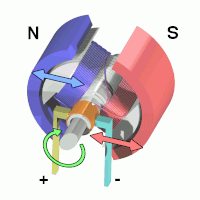
Photo from wikipedia
In recent years, the use of unmanned aerial vehicles (UAVs) has increased significantly. Asymmetrical factors, or frictional studies on the disc brake of UAVs, are one of the safety considerations… Click to show full abstract
In recent years, the use of unmanned aerial vehicles (UAVs) has increased significantly. Asymmetrical factors, or frictional studies on the disc brake of UAVs, are one of the safety considerations taken into consideration during the design process because UAVs and their components have been built with the best safety in mind. This study focuses on choosing the optimal material for a UAV’s disc brake by using transient structural and thermal models. In order to compare the asymmetry-based frictional force produced by the two ways; the processes used in the transient simulation are validated using pin-on-disc (POD) testing. The foundation for this validation investigation is a metal matrix composite made of an aluminum alloy, and the basis tool is an ASTM G99-based computational test specimen. Steel-EN24 and carbon ceramic matrix composites testing are expanded using the same POD tests. A range of 3 percent to 8 percent error rates is found. As a result, the calculation techniques are applied to the UAV’s disc brake after they have proven to be trustworthy. This fixed-wing UAV’s extensions have a 5 kg payload capacity. The weight, avionics components, tire dimensions, and disc brake dimensions of the other UAV design parts are calculated using analytical formulas. The final designs are made using CATIA as a result. The grid convergence experiment is organized using a traditional finite element analysis tool. Finally, at its maximum rotational speed, a UAV’s disc brake is put through asymmetrical friction testing based on structural and thermal consequences. The correct materials for critical applications, such as carbon fiber-woven-wet-based reinforced polymer and Kevlar unidirectional-49-based reinforced polymer composites for changing rotating speeds, have now been made possible by fixed-wing UAVs.
Journal Title: Symmetry
Year Published: 2022
Link to full text (if available)
Share on Social Media: Sign Up to like & get
recommendations!